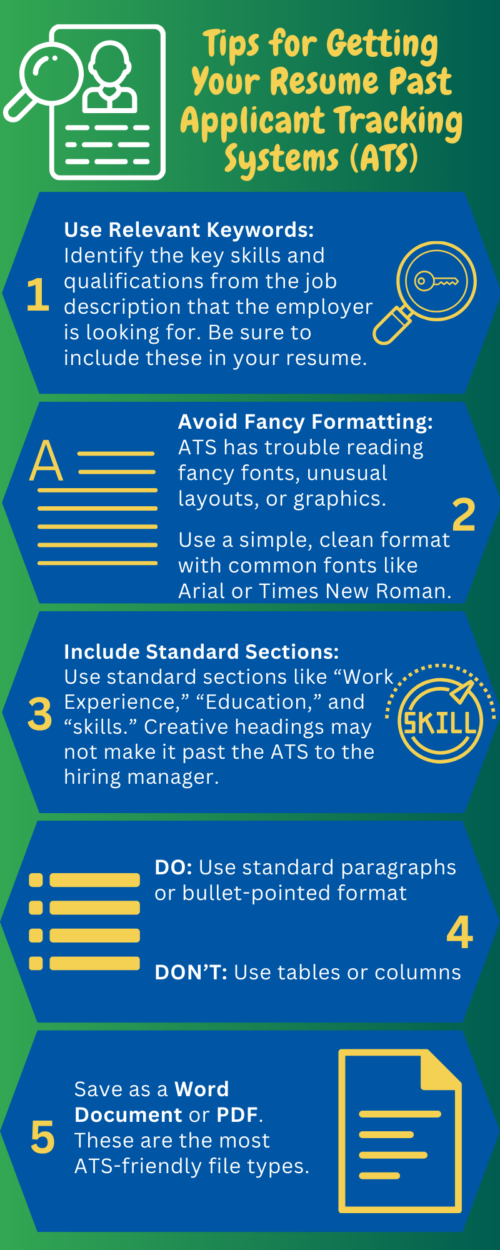By Julianne Hill, Program Specialist, Skilled Trades and Clean Tech, Goodwill Industries International
In today’s competitive job market, it is essential to have a résumé that will stand out. Your résumé is not just a list of jobs you have had. It is like a poster advertising you. It shows off your work history and skills. This blog will give you best practices on making a résumé that will get you noticed!
The Purpose of a Résumé
A résumé is like the story of your career. It tells where you have worked, what you have done and the skills you have learned along the way. Your résumé should promote you as the right person for the job. Don’t be afraid to sell yourself. That is the purpose of your résumé.
The Modern Résumé – Key Elements
Résumés should be simple and to the point. They should include:
- Contact Information: Your name, email and phone number.
- Summary or Objective: This should be a short statement about your job goals and what you bring to the table.
- Work Experience: The jobs you have had and what you have achieved there.
- Skills: A list of your abilities that are most important for the job.
- Education: Where did you go to school? What degrees or career credentials did you achieve?
- Optional Sections: Certificates, volunteer work, languages, etc.
Résumé Customization
A pro tip is to customize your résumé for every job. Each one should be special for the job you’re applying to. Reference the job descriptions and find the skills and experience the company seeks. If your skills match the requirements listed in the job description, be sure to make them prominent on your résumé. Customizing your résumé like this will set it apart from others.
Achievements by the Numbers
Employers like numbers because they clearly represent what you’ve accomplished. Did you cut project time by 20%? Did you raise sales by 30%? Did you cut costs by 10%? Facts like these make a stronger résumé and help you stand out.
Optimize Your Résumé for Keywords
Companies today often use software called Applicant Tracking Systems (ATS) to sort résumés. This software looks for keywords matching your résumé and the job description. You are more likely to be noticed if you use the keywords from the job description in your résumé.
Some résumés do not even make it to the hiring manager as the ATS filters them out. Ensure your résumé is ATS-friendly, meaning it uses the right keywords.

Formatting & Design
Ensuring that your résumé is clear, concise and easy to read is crucial. Hiring managers often take seven seconds or less to scan a résumé. Seven seconds is a short time to make an impression. Suppose a hiring manager can easily see that you are qualified within those first few seconds. In that case, they are more likely to spend additional time reviewing your résumé in more detail.
Common Résumé Mistakes
Mistakes such as spelling errors, unexplained gaps in your history and/or too much information can make employers overlook your other qualifications for the job.
Proofread your résumé and ask others to read it to make sure it flows easily. If there are gaps in your history, explain them honestly.
Your résumé should be short and sweet. Every word should be necessary. White space (empty areas on the page) is essential. It makes your résumé look neat and inviting.
In this blog, we discussed the importance of a résumé. A remarkable résumé can be your ticket to the job of your dreams.
Be sure to add crucial details, tailor your résumé to each job, use quantifiable achievements and review for accuracy.
Remember that every journey begins with a single step. In your career journey, that first step could be refining your résumé. So, don’t wait — start creating your future by enhancing your résumé today. Best of luck to you!
Additional Resources:



